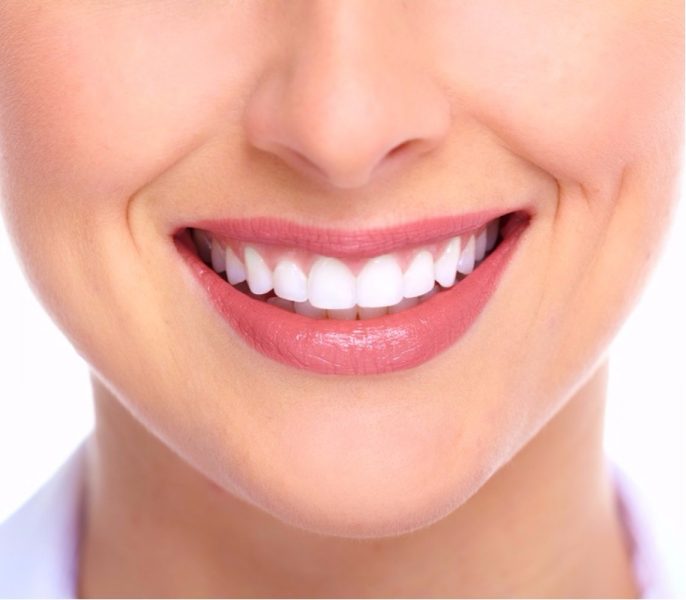
Composite Veneers vs Porcelain Veneers: Top 5 Differences
Achieving a beautiful smile is no longer a problem with the extraordinary evolution of dental veneering. With a wide range of options to embellish your smile and get rid of crooked teeth, composite veneers and porcelain veneers certainly stand out for their remarkable results.
Since composite and porcelain veneers appear almost similar to the untrained eyes, it is difficult to differentiate between the two. Both types differ in terms of the materials used, cost, longevity and aesthetics.
With a clear understanding of the key differences, you can make the right choice with your dentist to create your perfect smile.
Material
Composite Veneers: Composite veneers or composite resin veneers are prepared from an amalgamation of materials like resin, coupling agent and fillers. The resin’s colour used in its composition is similar to that of natural teeth.
Porcelain Veneers: These types of veneers are actually translucent and thin-layered porcelain laminations, which are manufactured in the laboratory as per the need of the patient.
Application
Composite Veneers: Composite veneers are directly applied to the teeth, in one visit and no prior preparation is required. A detailed study in IJSR elaborates the artistic application of composite veneers, which involves almost no invasion of teeth and no removal of the teeth structure. Therefore, these veneers are a quicker option as compared to porcelain veneers.

Porcelain Veneers: For the placement of porcelain veneers, a tiny invasion of teeth is done, to aptly adjust the fitting of porcelain laminations. To ensure the correct application, along with the necessary adjustments of teeth, you would require usually two or more visits to the doctor.
Longevity
Composite Veneers: In comparison to porcelain veneers, composite veneers offer a fast procedure, but in terms of longevity have a shorter lifespan. However, the longevity is of a reasonable amount of time, ranging from 5 to 7 years as per a study published in OAM Journal of Medical Sciences.
Porcelain Veneers: Porcelain veneers are best known for their durability, which no other veneer offers. The material of porcelain is highly durable and depending upon oral hygiene can last up to 15 years easily. According to a journal published in JAMMR, there were several accounts where porcelain veneers have lasted for more than 20 years, in excellent condition.
Aesthetics
Composite Veneers: Composite veneers are aesthetically reasonably acceptable, but usually do not sustain the quality. The substance used in these veneers is permeable in nature, thus it is highly likely to get stained easily. Moreover, the composite attached to teeth requires polishing to create a bewitching tooth-like colour, which still does not quite compare.
Porcelain Veneers: Porcelain veneers are the best at providing a wide array of durable aesthetic solutions. They are naturally stain-resistant and provide a lasting tooth-like colour. Also, porcelain contains translucent quality similar to tooth enamel, which provides an extraordinarily natural tooth appearance.
Cost-Effectiveness
Composite Veneers: Composite veneers are cost-effective as compared to porcelain veneers. They do not require much preparation and can be applied in one visit to the doctor, thus it costs less money.
Porcelain Veneers: Porcelain veneers are expensive as compared to composite veneers. The only reason is that these veneers are prepared in laboratories, require more sittings with the doctor and more resources to fully do the job.
VIDEO LINK: https://www.youtube.com/watch?v=k5adwJ-Uv8Q
VIDEO CAPTION: A quick guide to what each veneer offers you
Porcelain Vs Composite in a Nutshell
After careful consideration of each type of difference between veneers, you can decide on which technique suits you the best. If there is still any ambiguity and you are unsure of what works for you, do not hesitate to consult a professional.

References:
- Panteqi, S., Meto, A. and Simeon, O., 2018. Componeers vs Porcelains. International Journal of Science and Research (IJSR), [online] 7(II). Available at: <https://www.researchgate.net/publication/329281563_Componeers_vs_Porcelains> [Accessed 10 August 2021].
- Alothman, Y. and Bamasoud, M., 2018. The Success of Dental Veneers According To Preparation Design and Material Type. Open Access Macedonian Journal of Medical Sciences, [online] 6(12), pp.2402-2408. Available at: <https://www.ncbi.nlm.nih.gov/pmc/articles/PMC6311473/> [Accessed 10 August 2021].
- Sailo, J., Bathla, N., Thakur, P., Nagpal, A., Gupta, R. and Duvedi, K., 2020. Porcelain Veneers vs Composite Resin Veneers: A Review. Journal of Advances in Medicine and Medical Research, [online] 32(24), pp.316-326. Available at: <https://www.journaljammr.com/index.php/JAMMR/article/view/30784> [Accessed 10 August 2021].
- Arthur Glosman, DDS. 2021. Porcelain Veneers Beverly Hills – Best Veneers in Los Angeles. [online] Available at: <https://arthurglosmandds.com/porcelain-veneers-beverly-hills> [Accessed 10 August 2021].









